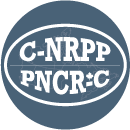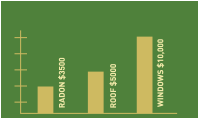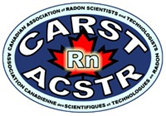 Canadian Association of Radon Scientists and Technologists Helping Canadians Reduce Radon Risk |
Are you a Real Estate Agent looking to learn more about RADON? Here are some BASIC RADON FACTS... |
Testing for RADON is EASY and it should be done in the living area of the home. 
RADON enters buildings where they touch the ground.
Every house can be reduced to a lower radon level. Call a professional to help: www.c-nrpp.ca/find-a-professional |
Every home needs to be tested for RADON and all homes can be fixed. |
The cost of a RADON MITIGATION system is NOT expensive. It is less costly than other home renovations. |
How does RADON affect our health? Radon is radioactive which means that radon spontaneously decays and releases energy. Since it is a gas, radon is inhaled into our lungs, and the energy released damages the DNA of the cells of our lung linings. As the cells repair themselves, mutations can occur and result in lung cancer. In Canada the statistics show that radon is responsible for over 3000 lung cancer deaths per year. |
Radon Mitigation System When installed by a C-NRPP professional, a radon mitigation system is the most effective way to reduce radon levels in a home. There are various types of systems with different names, but they all have the same purpose: A radon mitigation system provides a pathway for the gas to reach the outdoor air without entering the home. Using a fan, a radon mitigation system creates an active pathway for radon - as well as moisture and other soil gases - to move directly from beneath the slab of the house to the outdoor air without entering the building. |
RESEARCH: Health Canada has conducted research to confirm that a radon mitigation system is the most effective method of reducing radon levels. HIRING a certified professional LOWERS RADON BY UP TO 90% INCREASING home ventilation LOWERS RADON BY UP TO 25-50% SEALING cracks LOWERS RADON BY AN AVERAGE OF 13% Find online at: https://www.canada.ca/en/health-canada/services/publications/health-risks-safety/residential-radon-mitigation-actions-follow-up-study.html |
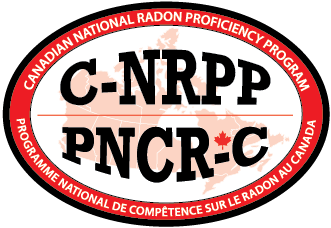 C-NRPP is Canada’s national certification program for Radon Professionals Health Canada and CARST (the Canadian Association of Radon Scientists & Technologists) developed the Canadian National Radon Proficiency Program (C-NRPP) to provide building owners with trained and certified professionals to help with testing and reducing radon levels. To find a certified professional, click: www.c-nrpp.ca/find-a-professional Radon Measurement Professionals measure radon levels in buildings. Radon Mitigation Professionals install mitigation systems to reduce radon inside buildings. A certified professional is your best resource when it comes to radon-related questions! | Health Canada: Health Canada has regional radiation specialists across Canada. You can find their contact information on their website: https://www.canada.ca/en/health-canada/corporate/contact-us/radon.html |
What are the options for Purchasers? When purchasing a home, it's important to remember that every home can be fixed. The new owners can be confident that they can move in, test for radon, and mitigate if required. When considering the budget for home purchase and initial renovations, it's best to add radon testing and mitigation (if necessary) to the top of the spending priority list. To know how much to reserve for a potential mitigation system, contact a certified professional to get an estimate. There may be some circumstances under which purchasers may want some indication of what radon levels are likely to be. For these circumstances, CARST has developed the Radon Screening Assessment. Another Option? – Radon Screening Assessment In certain circumstances, home buyers may want an indication of what radon levels are likely to be in the home they are considering purchasing. Due to the time constraints frequently experienced during a real estate transaction, long-term radon measurements are often not practical during the time a house is for sale. If a long-term radon measurement has not been conducted within the 2 years prior to a house being listed, a Radon Screening Assessment can provide an indicator on whether funds may be required to cover the installation of a radon mitigation system. It’s important to remember that even after a home has been assessed using a radon screening assessment, it must still be tested using a long-term radon test once the new owners take possession of the house. Specific protocols have been developed for conducting a Radon Screening Assessment. You can contact a C-NRPP professional to discuss or read through them online here. Understanding how a Radon Assessment fits into a Real Estate Transaction Here's how an assessment during a real-estate transaction works: First, contact a C-NRPP Measurement Professional to conduct a Radon Screening Assessment. The occupant of the home must agree to the test, and also to keeping the home under 'closed house' conditions for as long as required. Closed-house conditions include:
The Radon Screening Assessment will be set up by the C-NRPP Measurement Professional. The detector must be in place for a minimum of 4 days. A longer duration is preferred, but not always practical in a real estate situation. The C-NRPP Measurement Professional has specific guidelines about where and how to place the test, as well as how to report on the results. |
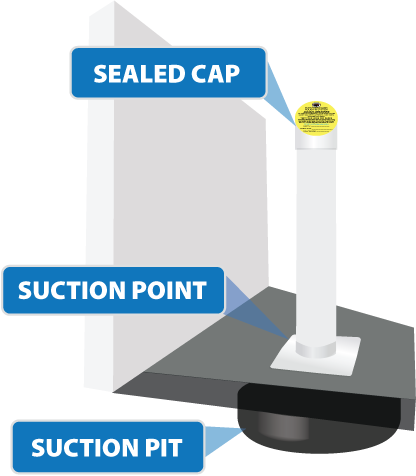 What radon prevention measures are in place in new homes? New homes with radon prevention measures still can have high levels of radon. Some new homes feature radon resistant features, but these do not guarantee low levels. Testing is ALWAYS recommended when occupying a new space. In most provinces across Canada, the building code states that new homes must have a radon rough-in system. What do homeowners need to know? First off, the radon rough-in does not reduce radon; it’s simply the beginning of a system. The rough-in is included in new construction to make it easier and more cost effective to install a radon mitigation system should one be required. Secondly, the rough-in must be properly capped, sealed and labeled, otherwise it could be introducing radon into the house. Homeowners need to test their home for radon and then decide if the radon rough-in needs to be finished into a Radon Mitigation System. The National Building Code states:
REGIONAL DIFFERENCES: Most provinces adopt the National Building Code. The differences are:
NOTE FOR BC: The building code in BC is divided into two approaches. It either has NO radon rough-in or it requires an extended radon rough-in which means the pipe extends to exit the building. This requirement is listed in a table in the building code entitled Table C-4. NOTE FOR Ontario: If you’re working in Ontario, it’s essential to inform homeowners about Tarion’s Home Warranty radon coverage. If a long-term radon test indicates that radon levels within a home exceed Health Canada’s actionable level of 200 Bq/m3, then Tarion will cover the costs required to mitigate a home up to a limit of $50,000. Find more information here. 1.png)
Tarion Warranty - Protects Ontarians from Radon If you’re working in Ontario, it’s essential to inform homeowners about Tarion’s Home Warranty radon coverage. If a long-term radon test indicates that radon levels within a home exceed Health Canada’s actionable level of 200 Bq/m3, then Tarion will cover the costs required to mitigate a home up to a limit of $50,000. Find more information on Tarion's website here. |
Additional Resources about RADON and REAL ESTATE: Radon Presentation (pdf) Radon Presentation (powerpoint) Radon Backgrounder for Real Estate Agents Radon Backgrounder - simple text to be used by real estate agents Feb 2023.docx Webinar for Real Estate Agents Radon and Real Estate - a C-NRPP Certificate course for Real Estate Agents French Resources: Real Estate Infograph - FRENCH.pdf Radon dans le cadre d’une transaction immobilière |
Frequently Asked Questions:
Q. Health Canada suggests testing for at least 3 months. Why does this document suggest a 4 day test? A. Every home needs to be tested for radon using a long-term (3 months+) test. This guideline offers an additional test that can be performed during a real-estate transaction, in the case where the home had not already been tested for radon prior to being listed for sale. Due to the time constraints frequently experienced during a real estate transaction, long-term radon measurements are often not practical during the time a house is for sale. If a long-term radon measurement has not been conducted prior to a real estate transaction, a radon screening assessment can provide important information on whether funds may be required to cover the installation of a radon mitigation system. It’s important to remember that even after a home has been assessed using a radon screening assessment, it must still be tested using a long-term radon test once the new owners take possession of the house. Q. We’ve lived in our home for many years. Why should we test our home now, when we’re selling it? A. Radon is a health hazard that Canadians have become increasingly aware of over the past few decades. Every home needs to be tested for radon, as it’s the only way to know the radon level in the home and whether the level should be reduced. Just as the home inspection will let the prospective buyer know about upcoming expenses, the radon screening assessment will let them know whether they’re likely to have the expense of installing a radon mitigation system. It is important to budget funds to take care of such an important health concern. Q. Will the radon assessment test slow the sale of our home or ruin the transaction? A. More and more Canadians are including a radon test as part of buying a home. In some areas every home is tested for radon prior to being sold. CARST’s Guideline sets out the best way to include radon in the real-estate transaction while considering everyone involved. Just like an old furnace or roof shingles in need of repair, high radon levels are easily remedied, at a price point that can be included in the negotiations. Following this guideline means that everyone involved in the sale of your home is “on the same page” and misunderstandings are less likely to occur. Q. How much does a radon mitigation cost? A. The cost of radon mitigation varies depending on the type of house construction, the type of mitigation system required, the location of the home, and market trends. It is difficult for a non-professional to assess the various factors that will determine how difficult it is to mitigate a given home. It is therefore important to obtain a quote from a C-NRPP mitigation professional when budgeting for the cost of mitigation. While the majority of mitigations across Canada range in price from $3 000 to $4 000, the cost may occasionally be as high as $10 000. Find more information here: https://takeactiononradon.ca/radon-reduction-sweepstakes-report-2020-2021/ |


